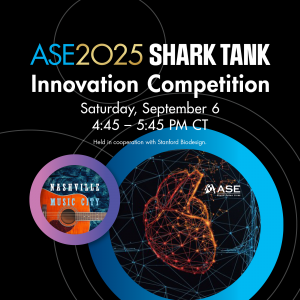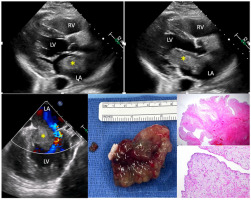
FOR IMMEDIATE RELEASE
Contact: Natalie Costantino
919-297-7170
[email protected]
American Society of Echocardiography Announces 2025-2026 Board of Directors
(DURHAM, NC, May 8, 2025)—The American Society of Echocardiography (ASE) is pleased to announce that its membership has elected nine new members to its 2025-2026 Board of Directors. These individuals will officially begin their terms on July 1, 2025, and will be introduced during ASE’s 36th Annual Scientific Sessions in Nashville, Tenn., Sept. 5-7, 2025.
The ASE Executive Committee welcomes newly elected Vice President Federico Asch, MD, FASE, MedStar Health Research Institute, Washington, D.C., who will serve a one-year term.
The following new Board members were elected to serve two-year terms:
- Karima Addetia, MD, FASE, University of Chicago Medical Center, Chicago, Ill.—Member at Large
- Pei-Ni Jone, MD, FASE, Lurie Children’s Hospital, Chicago, Ill.—Pediatric and Congenital Heart Disease Council Steering Committee Chair
- Shiraz Maskatia, MD, FASE, Stanford University Medical Center, Palo Alto, Calif.—Leadership Academy Representative
- Monica Mukherjee, MD, FASE, Johns Hopkins University, Baltimore, Md.—Member at Large
- Dermot Phelan, MD, PhD, FASE, Sanger Heart and Vascular Institute-Atrium Health, Charlotte, N.C.—Member at Large
- Vera Rigolin, MD, FASE, Northwestern Medicine, Chicago, Ill.—Past President Representative
- Douglas Shook, MD, FASE, Brigham and Women’s Hospital, Boston, Mass.—Perioperative Echocardiography Council Steering Committee Chair
- Lissa Sugeng, MD, MPH, FASE, Yale University School of Medicine, New Haven, Conn.—Member at Large
Previously elected members of the 2024-2025 ASE Executive Committee transitioning to a new position on the 2025-2026 Board are:
- Theodore Abraham, MD, FASE, University of California San Francisco, San Francisco, Calif.—Immediate Past President
- Cynthia Taub, MBA, MD, FASE, SUNY Upstate Medical University, Syracuse, N.Y.—President-Elect
- David Wiener, MD, FASE, Thomas Jefferson University Hospital, Philadelphia, Pa.—President
Continuing their service on the ASE Executive Committee through June 2026 are:
- Akhil Narang, MD, FASE, Northwestern University, Chicago, Ill.—Treasurer
- Kelly Thorson, DHSc, MSRS, MS, ACS, RDCS, FASE, Lucile Packard Children’s Hospital Stanford, Palo Alto, Calif.—Council Representative
- Melissa Wasserman, RCCS, RDCS, FASE, Children’s Hospital of Philadelphia, Philadelphia, Pa.—Secretary
- Robin Wiegerink, MNPL, ASE, Durham, N.C.—Chief Executive Officer
Directors continuing with their final year of service include:
- Kristen Billick, BS, ACS, RCS, RDCS, FASE, Scripps Clinic and La Jolla Hospital, La Jolla, Calif.—Member at Large
- Allyson Boyle, MHA, ACS, RDCS, FASE, Sanger Heart and Vascular Institute-Atrium Health, Charlotte, N.C.—Cardiovascular Sonography Council Steering Committee Chair
- Tony Forshaw, MS, FASE, Queensland University of Technology, Queensland, Australia—International Representative
- Jennifer Liu, MD, FASE, Memorial Sloan Kettering Cancer Center, New York, N.Y.—Member at Large
- Kameswari Maganti, MD, FASE, Rutgers Robert Wood Johnson Medical School, New Brunswick, N.J.—Member at Large
- Nishath Quader, MD, FASE, Washington University in St. Louis, St. Louis, Mo.—Interventional Echocardiography Council Steering Committee Chair
- Matthew Vorsanger, MD, RPVI, FASE, NYU Grossman School of Medicine, New York, N.Y.—Circulation & Vascular Ultrasound Council Steering Committee Chair
ASE thanks the following nine Board members who will complete their service on June 30, 2025:
- Benjamin Eidem, MD, FASE, Mayo Clinic, Rochester, Minn.—Immediate Past President
- Craig Fleishman, MD, FASE, Arnold Palmer Hospital for Children, Orlando, Fla.—Pediatric and Congenital Heart Disease Council Steering Committee Chair
- Enrique Garcia-Sayan, MD, FASE, Baylor College of Medicine, Houston, Texas—Member at Large
- Allison Hays, MD, FASE, Johns Hopkins University, Baltimore, Md.—Member at Large
- Lanqi Hua, MS, ACS, RDCS, FASE, Mass General Brigham Hospital, Boston, Mass.—Member at Large
- Sheela Pai Cole, MD, FASE, Stanford University Medical Center, Redwood City, Calif.—Perioperative Echocardiography Council Steering Committee Chair
- Lucy Safi, DO, FASE, Mount Sinai, West New York, N.J.—Leadership Academy Representative
- Seda Tierney, MD, FASE, Stanford University Medical Center, Palo Alto, Calif.—Member at Large
- Susan Wiegers, MD, FASE, Lewis Katz School of Medicine at Temple University, Philadelphia, Pa.—Past President Representative
About American Society of Echocardiography
The American Society of Echocardiography (ASE) is the Society for Cardiovascular Ultrasound Professionals™. ASE is the largest global organization for cardiovascular ultrasound imaging serving physicians, sonographers, nurses, veterinarians, and scientists and as such is the leader and advocate, setting practice standards and guidelines for the field. The Society is committed to advancing cardiovascular ultrasound to improve lives. In 2025, ASE is celebrating its milestone 50th anniversary. For more information, visit the ASE website ASEcho.org or social media pages on Facebook, X, LinkedIn, Instagram and Bluesky.
###





